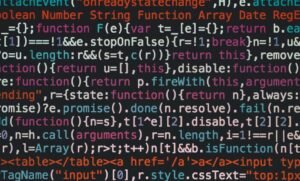Neural Net Wiki
Neural networks, also known as artificial neural networks or ANNs, are computing systems inspired by the structure and function of the human brain. They have revolutionized various fields such as machine learning, computer vision, natural language processing, and speech recognition. In this article, we will explore the fundamentals of neural networks, their applications, and their potential impact on the future of technology.
Key Takeaways:
- Neural networks are computing systems inspired by the human brain.
- They have revolutionized machine learning, computer vision, natural language processing, and speech recognition.
- Neural networks have the potential to significantly impact the future of technology.
How Neural Networks Work
Neural networks consist of interconnected nodes, called artificial neurons or “nodes,” which are organized in layers. The three main types of layers are the input layer, hidden layers, and the output layer. Each node receives input from nodes in the previous layer, performs a computation, and passes the result to nodes in the next layer.
*Neural networks are powerful models capable of learning complex patterns and relationships in data.
These connections between nodes are represented by weights, which determine the strength and importance of the input signals. During the learning process, neural networks adjust these weights to minimize the difference between the predicted outputs and the actual outputs, a process known as training or optimization.
Applications of Neural Networks
Neural networks have found applications in numerous fields, including:
- Machine learning: Neural networks are at the heart of many machine learning algorithms, enabling tasks such as image and speech recognition, natural language understanding, and recommendation systems.
- Computer vision: Neural networks have greatly advanced computer vision, enabling image classification, object detection, and image segmentation.
- Natural language processing: Neural networks are used for language modeling, sentiment analysis, and machine translation.
- Robotics: Neural networks are used to control robotic systems, enabling tasks such as autonomous driving, object manipulation, and locomotion.
*Neural networks have the potential to revolutionize healthcare, finance, and other industries.
Types of Neural Networks
There are various types of neural networks, each tailored for specific tasks:
1. Feedforward Neural Networks
Feedforward neural networks consist of layers of nodes that process input data sequentially. They are used for tasks such as classification and regression, where the information flows in one direction, from the input to the output layer.
2. Convolutional Neural Networks
Convolutional neural networks (CNNs) are designed for processing grid-like data such as images. They utilize convolutional layers, pooling layers, and fully connected layers to extract features and classify images.
3. Recurrent Neural Networks
Recurrent neural networks (RNNs) are specialized in handling sequential data, such as time series or natural language. They have feedback connections, allowing nodes to form temporal dependencies and maintain a memory of past inputs.
Neural Network Limitations
While neural networks are powerful tools, they also have some limitations:
- Training time and computational resources required can be significant.
- Interpretability and explainability of neural networks are challenging.
- Large-scale neural networks require vast amounts of labeled training data.
*Neural networks are continuously evolving and researchers are actively working on addressing these limitations.
Tables
| Neural Network Type | Application |
|---|---|
| Feedforward Neural Networks | Classification, Regression |
| Convolutional Neural Networks | Image Classification, Object Detection |
| Recurrent Neural Networks | Speech Recognition, Language Modeling |
| Advantages | Disadvantages |
|---|---|
| Ability to learn complex patterns | Training time and computational resources required |
| High accuracy in many tasks | Interpretability and explainability challenges |
| Industry | Potential Applications |
|---|---|
| Healthcare | Disease diagnosis, Drug discovery |
| Finance | Stock market prediction, Fraud detection |
The Future of Neural Networks
The future of neural networks is promising. With ongoing advancements and research, neural networks have the potential to revolutionize various industries, including healthcare, finance, and manufacturing. They can help in areas such as disease diagnosis, drug discovery, stock market prediction, and fraud detection.
*Neural networks are reshaping technology, and their potential is boundless.

Common Misconceptions
Neural Net Wiki
When it comes to neural networks, there are several common misconceptions that people often have. These misconceptions can lead to a misunderstanding of how neural networks work and what they are capable of. Below are three common misconceptions about neural networks:
- Neural networks can think and reason like humans
- Neural networks always have a clear and intelligible decision-making process
- Training a neural network guarantees perfect performance
Firstly, many people believe that neural networks can think and reason like humans. While neural networks are capable of learning from data and making predictions, they do not possess human-like intelligence. Neural networks are mathematical models designed to recognize patterns in data and make decisions based on those patterns. They lack consciousness, emotions, and the ability to understand context in the same way humans do.
Secondly, another common misconception is that neural networks always have a clear and intelligible decision-making process. Neural networks are often referred to as “black boxes” because their internal workings are not easily interpretable. While the input and output of a neural network can be understood, it can be challenging to determine how exactly the network arrives at its decision. This lack of transparency can be problematic in certain domains, such as healthcare or finance, where explainability is crucial.
Thirdly, there is a misconception that training a neural network guarantees perfect performance. While training is essential for a neural network to learn from data, it does not ensure flawless predictions. Neural networks are susceptible to overfitting, where they become overly specialized to the training data and perform poorly on new, unseen data. Regularization techniques and careful validation are vital to mitigate overfitting and achieve good generalization.
Overall, it is important to dispel these common misconceptions surrounding neural networks. Understanding the limitations and capabilities of neural networks can help inform more accurate expectations and promote informed decision-making regarding their usage.

Introduction to Neural Networks
Neural networks are a powerful machine learning techniques inspired by the human brain. They are composed of interconnected nodes, or “neurons,” that process and analyze data to make predictions or classify inputs. Each neuron takes in a set of inputs, applies weights to them, and passes the result through an activation function. In this article, we will explore various aspects of neural networks and their applications. Let’s dive into the exciting world of neural networks through the following tables:
Table 1: Key Components of a Neural Network
In order to better understand the inner workings of a neural network, we need to familiarize ourselves with its main components. The table below outlines the essential elements that make up a neural network:
| Component | Description |
|————-|——————————————————————————————————-|
| Neuron | A fundamental unit in a neural network that processes and transmits signals. |
| Activation | A function applied to the output of a neuron to introduce non-linearity and determine neuron firing. |
| Weight | A value assigned to the input of a neuron, which adjusts the impact of that input on the next layer. |
| Bias | A constant added to the weighted sum of inputs to shift the activation function’s threshold. |
| Layer | A collection of neurons that receives input, computes responses, and propagates signals to the output. |
Table 2: Types of Neural Networks
Neural networks can be categorized into different types based on their architecture and purpose. The following table presents some popular neural network architectures:
| Network Type | Description |
|———————|——————————————————————————————|
| Feedforward | Data flows in one direction, from input layer to output layer, without loops or cycles. |
| Recurrent | Feedback connections allow signals to move in loops, enabling memory and dynamic behavior. |
| Convolutional | Designed to process grid-like data, such as images, by using filters and shared weights. |
| Radial Basis | Based on radial basis functions, which compute the distance between a point and a center. |
| Self-Organizing Map | Represents input data in a lower-dimensional grid to reveal patterns and clusters. |
Table 3: Advantages and Disadvantages of Neural Networks
Neural networks have their own set of advantages and disadvantages. Understanding these pros and cons can help determine when to best utilize them. The table below highlights the key advantages and disadvantages of neural networks:
| Advantages | Disadvantages |
|————————————————-|——————————————————-|
| Adaptability to learn from complex and non-linear data | Highly dependent on the availability of large training datasets. |
| Ability to generalize and make predictions on unseen data | Prone to overfitting, where the model performs well on training data but poorly on new data. |
| Powerful feature extraction capabilities | Computationally expensive, requiring substantial computational resources. |
| Robustness against noise and missing data | Lack interpretability, making it challenging to understand the reasoning behind predictions. |
Table 4: Neural Network Use Cases
Neural networks find applications in various domains due to their ability to process complex data and make accurate predictions. The table below demonstrates some use cases of neural networks:
| Application | Description |
|—————————-|———————————————————————————————–|
| Image Recognition | Identifying and classifying objects within images based on their features and characteristics. |
| Natural Language Processing | Analyzing and processing human language to perform tasks like sentiment analysis or chatbots. |
| Fraud Detection | Detecting fraudulent behavior by analyzing patterns and anomalies in large-scale financial data. |
| Autonomous Vehicles | Enabling vehicles to perceive the environment, understand road conditions, and make decisions. |
Table 5: Activation Functions in Neural Networks
Activation functions play a crucial role in determining how neural networks respond to inputs and produce outputs. The table below showcases various activation functions commonly used in neural networks:
| Activation Function | Description |
|———————|———————————————————|
| Sigmoid | Smooth, S-shaped function that maps inputs to probabilities between 0 and 1. |
| ReLU | Rectified Linear Unit, giving a zero output for negative inputs and linear output for positive inputs. |
| Tanh | Hyperbolic Tangent function, mapping inputs to values between -1 and 1. |
| Softmax | Used in multi-class classification to convert a vector of real numbers into probabilistic outputs. |
| Leaky ReLU | Variation of ReLU that allows a small negative output for negative inputs to prevent dead neurons. |
Table 6: Neural Network Training Algorithms
Training a neural network involves optimizing its parameters to minimize the error or maximize its performance. The table below provides an overview of some popular neural network training algorithms:
| Training Algorithm | Description |
|——————–|—————————————————————————————————————————|
| Backpropagation | Calculates the gradient of the loss function to update weights and biases, propagating the error backward through the network. |
| Stochastic Gradient Descent (SGD) | Uses random data samples to compute the gradient, making updates to weights and biases after each sample. |
| Adam | Adaptive Moment Estimation that combines advantages of RMSProp and AdaGrad to improve convergence speed and performance. |
| Genetic Algorithm | Inspired by natural selection, it employs evolutionary operations such as mutation and crossover to optimize neural networks. |
Table 7: Neural Network Performance Metrics
Measuring the performance of neural networks is essential to evaluate their effectiveness. The table below presents commonly used performance metrics for neural networks:
| Performance Metric | Description |
|——————–|—————————————————————————————————————–|
| Accuracy | The proportion of correctly classified instances out of the total instances evaluated. |
| Precision | Measures the percentage of true positive predictions out of the total positive predictions made. |
| Recall (Sensitivity) | Indicates the percentage of true positive predictions out of the total actual positive instances. |
| F1 Score | Harmonic mean of precision and recall, providing a balance between precision and recall. |
| Mean Absolute Error (MAE) | Measures the average absolute difference between predicted and actual values, indicating overall prediction error. |
Table 8: Neural Network Libraries and Frameworks
To facilitate the development and deployment of neural networks, numerous libraries and frameworks have been developed. The table below showcases some popular options:
| Library/Framework | Description |
|———————|————————————————————————————————————|
| TensorFlow | Open-source library developed by Google Brain, providing a comprehensive platform for building ML models. |
| PyTorch | Python-based framework with dynamic computation graphs, offering a wide range of tools for deep learning. |
| Keras | High-level API built on top of TensorFlow, simplifying the process of creating and training neural networks. |
| Theano | Python library for fast numerical computation, often used for deep learning and neural network implementations. |
| scikit-learn | Machine learning library offering tools for classification, regression, clustering, and other ML tasks. |
Table 9: Neural Network Training Data Requirements
Training neural networks typically requires extensive and high-quality datasets. The table below highlights crucial aspects of training data:
| Data Requirement | Description |
|——————|——————————————————————————————————————|
| Size | Sufficient quantity of data to capture a broad range of patterns and ensure generalized learning. |
| Quality | Clean and accurately labeled data, free from biases, noises, or missing values, to avoid model deducing false patterns. |
| Diversity | Including diverse samples from various classes or categories to prevent overfitting and improve generalization. |
| Balance | Comparable representation of all classes in the dataset to ensure the model does not favor any particular class. |
Table 10: Ethical Considerations in Neural Network Development
As neural networks become more prevalent, it is crucial to address ethical concerns and ensure responsible development. The table below highlights some ethical considerations in neural network development:
| Ethical Consideration | Description |
|———————–|———————————————————————————————————————————|
| Bias and Fairness | Ensuring the network is not biased against certain groups or perpetuates unfair prejudice in decision-making. |
| Privacy and Security | Safeguarding user data and addressing potential vulnerabilities to prevent unauthorized access or misuse. |
| Transparency | Promoting transparency by enabling clear explanations of decisions made by the neural network. |
| Accountability | Establishing mechanisms to identify responsible parties and mitigate risks associated with errors or misuse of neural networks. |
Neural networks offer a powerful tool for tackling complex problems and making accurate predictions. Through proper understanding and utilization, these networks pave the way for advancements in various fields such as computer vision, natural language processing, and more. By embracing ethical considerations and addressing potential challenges, we can harness the full potential of neural networks while ensuring their responsible deployment.
Frequently Asked Questions
What is a Neural Network?
A neural network is a type of artificial intelligence that aims to mimic the structure and function of a human brain. It consists of interconnected neurons or nodes that work together to process and analyze large amounts of data, enabling the network to learn and make predictions or decisions.
How does a Neural Network work?
A neural network consists of layers of interconnected nodes, known as artificial neurons or perceptrons. Each neuron receives input data through weighted connections, applies an activation function, and produces an output. The outputs from one layer become the inputs to the next layer until the final layer produces the network’s output.
What is the role of training in Neural Networks?
Training is the process of presenting the neural network with a set of input data and known output values, allowing it to adjust its internal parameters, such as the weights and biases, to minimize the difference between the predicted output and the expected output. This training process enables the neural network to learn from examples and improve its accuracy over time.
What are the different types of Neural Networks?
There are various types of neural networks, each tailored to solve specific problems. Some popular types include feedforward neural networks, recurrent neural networks, convolutional neural networks, and generative adversarial networks. Each type has its unique architecture and application.
What are the advantages of Neural Networks?
Neural networks have several advantages, such as their ability to learn from large and complex data sets, handle non-linear relationships, generalize patterns, adapt to new information, and solve complex problems. They are particularly useful in tasks such as pattern recognition, image and speech recognition, natural language processing, and predictive analytics.
What are the limitations of Neural Networks?
Despite their effectiveness, neural networks have limitations. They require a large amount of labeled training data, computational resources, and significant training times. They can also suffer from overfitting, where the model becomes too specialized to the training data and fails to generalize well to new inputs. Neural networks are also considered black-box models, making it challenging to interpret their decision-making process.
What is deep learning in the context of Neural Networks?
Deep learning is a subfield of machine learning that focuses on using deep neural networks with multiple hidden layers to learn hierarchical representations of data. Deep learning has achieved remarkable success in various domains, such as computer vision, natural language processing, and speech recognition, by automatically learning complex features and patterns.
How are Neural Networks trained?
Neural networks are trained using optimization algorithms, such as gradient descent, to update the network’s weights and biases iteratively. During the training process, the network’s performance is evaluated using a loss function that quantifies the difference between the predicted output and the actual output. The optimization algorithm aims to minimize this loss function by adjusting the network’s parameters.
Can Neural Networks be used for real-time applications?
Yes, neural networks can be deployed for real-time applications, but it depends on the complexity of the network and the available computing resources. Some neural networks, such as feedforward networks with a few layers, can be implemented on resource-constrained devices. However, more complex networks, such as deep convolutional networks, may require powerful hardware or distributed computing to achieve real-time performance.
What is the future of Neural Networks?
The future of neural networks is promising, with ongoing research and advancements in the field. Neural networks are expected to play a vital role in various domains, including healthcare, finance, autonomous systems, robotics, and more. Techniques to improve interpretability, efficiency, and scalability of neural networks are being explored, opening up new possibilities for their utilization in different applications.




